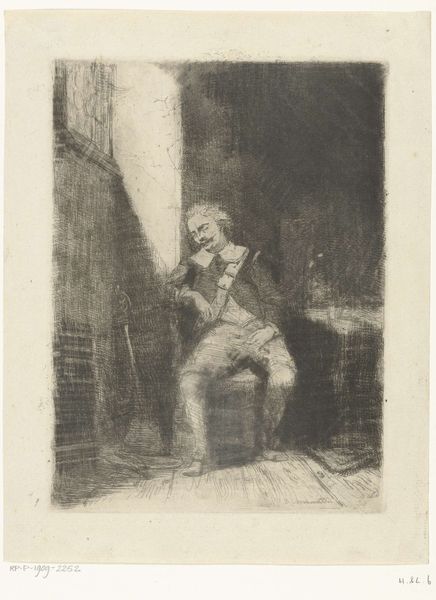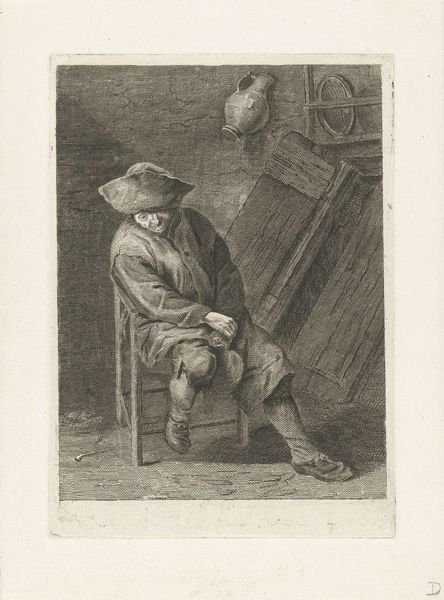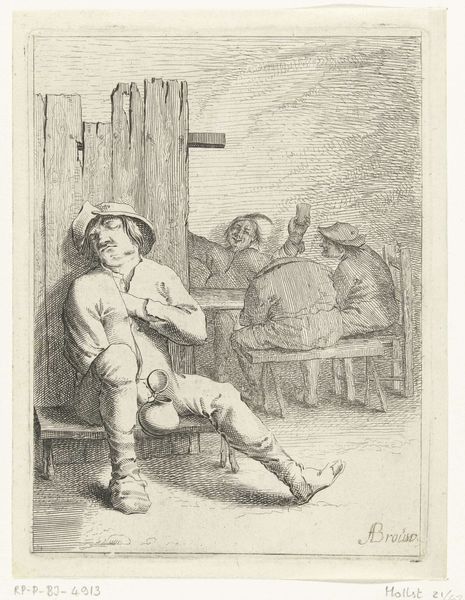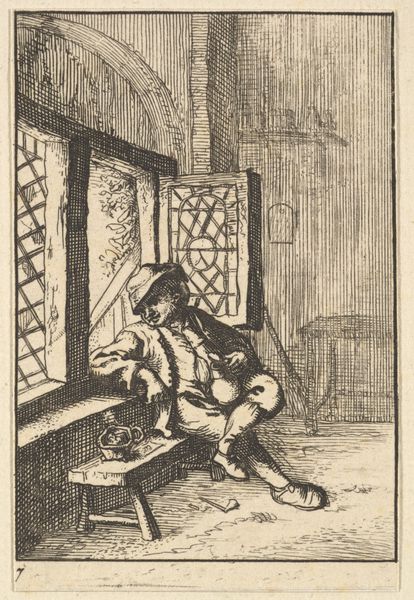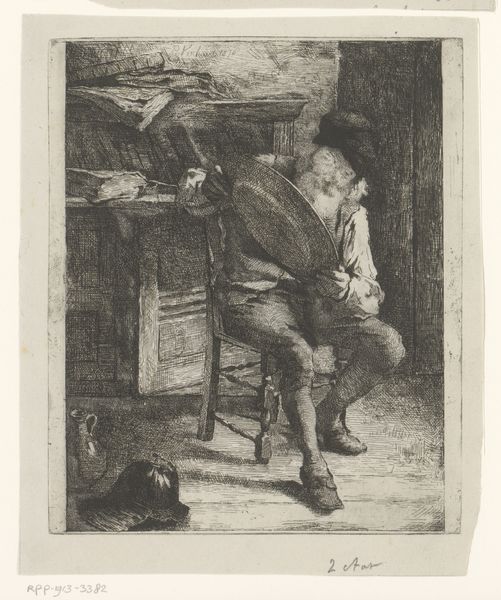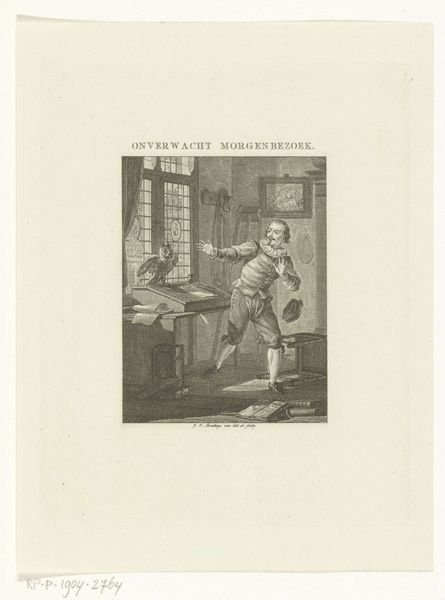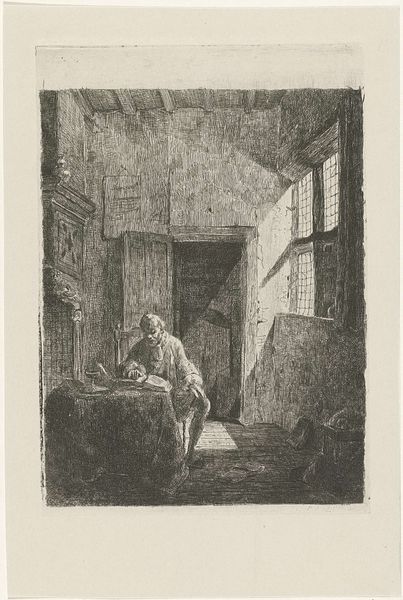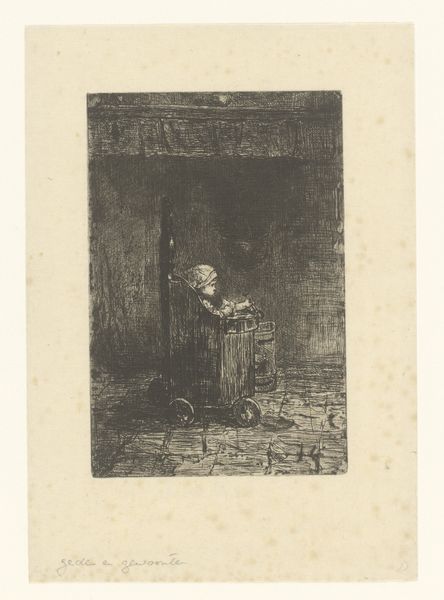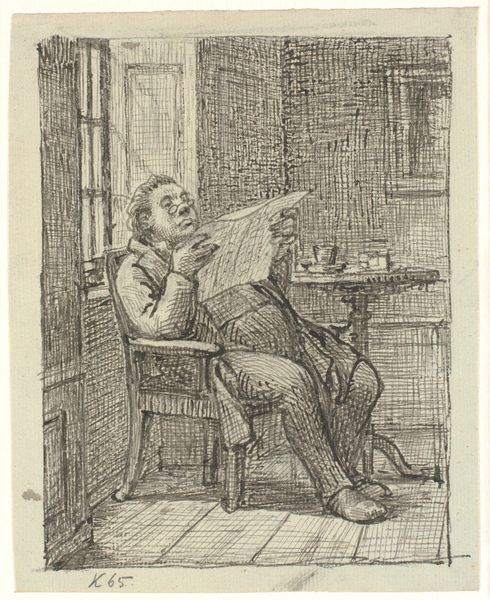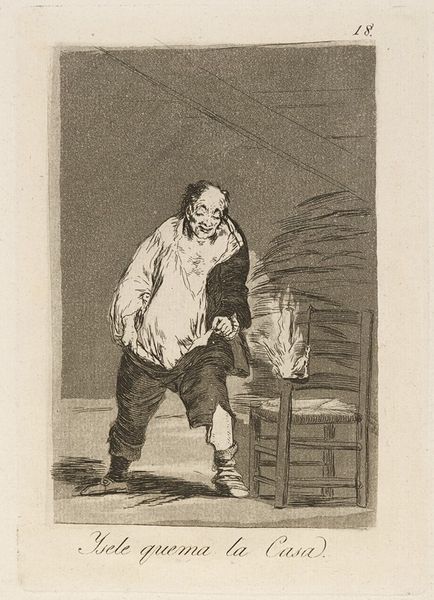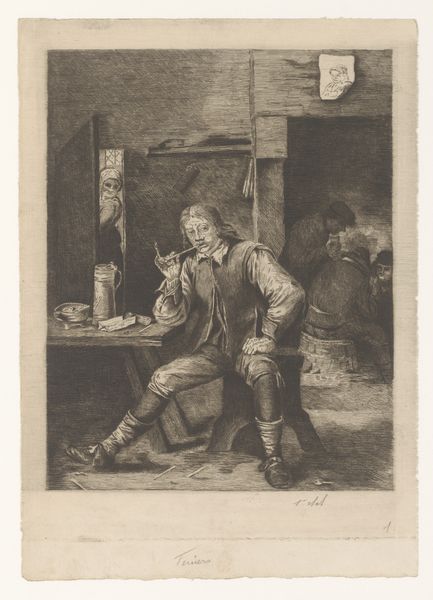
print, etching
#
portrait
# print
#
etching
#
genre-painting
#
realism
Dimensions: height 201 mm, width 151 mm
Copyright: Rijks Museum: Open Domain
Curator: This is Carel Frederik Bendorp's "Soldaat slaapt op stoel bij raam," translating to "Soldier Sleeping on a Chair by a Window," made sometime between 1829 and 1897. It’s an etching. Editor: Ah, there’s such a quiet melancholy about it. He’s slumped in the chair; you can almost feel the weight of fatigue in his posture. That diffused light seems to soften the hard edges of duty, if only for a moment. Curator: Yes, and etching, as a medium, lends itself so well to this somber mood. The repetitive act of scoring lines, creating depth, mimics a slow process of material construction and wear. Think of the acid slowly eating away at the metal, mirroring how duty eats away at the soldier. Editor: Absolutely! It's almost as if the artist himself is carving out this private moment of vulnerability, like bearing witness to a hushed secret. Is that a helmet on the table there? A memento mori, perhaps, reminding us that even amidst battle, life pauses. Curator: Precisely. That interplay between the tools of war and a relaxed figure invites viewers to consider the tension between private vulnerability and public obligation, also this interior scene allows for consideration regarding living quarters for soldiers, what does that tell us about army provision or the lived experience of soldiers? The labor that produces safety often makes comfort difficult to reach for. Editor: I find myself wondering what dreams flicker behind his closed eyelids. Is he home again? Or still entangled in the landscapes of conflict? The artist masterfully leaves space for our own imaginations to wander and rest, just like the soldier. Curator: Indeed. Bendorp uses realism, which was rising in popularity then, to showcase daily life—moving away from idealised history paintings. In terms of the social function, it brings the lived experiences of individuals to the fore. This speaks volumes about shifting art-making values during that period. Editor: What lingers for me is that exquisite vulnerability—seeing this etching is like stumbling upon a shared moment of exhaustion we've all experienced. Curator: Yes, and I leave considering labor, not only what we can perceive materially but its unseen weight upon this tired soul.
Comments
No comments
Be the first to comment and join the conversation on the ultimate creative platform.
